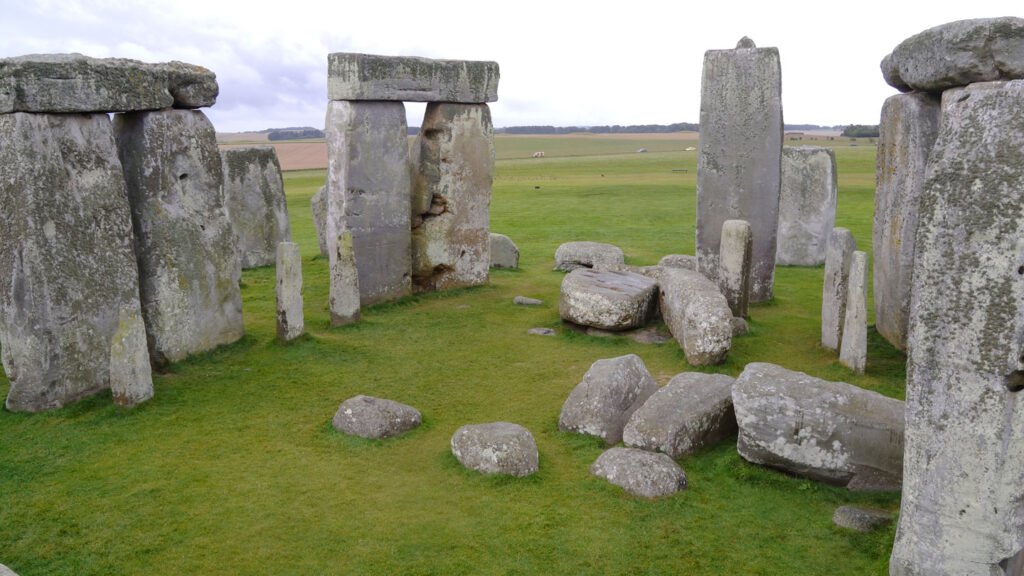[ad_1]
Grizzly particulars about historic youngster sacrifices, a map of a misplaced metropolis within the Amazon and the reply to a Stonehenge thriller are a few of this 12 months’s insights into human historical past.
Bygone brains
Discovering a human mind at an archaeological website is extra widespread than you may suppose. A brand new archive catalogs some 4,400 historic brains which have been discovered dried out, frozen or in any other case preserved (SN: 3/19/24). Brains might owe such stunning sturdiness to their chemical make-up.
Historic arts and crafts
The oldest rock artwork within the Americas could also be a set of cave work in Argentina that date again some 8,200 years (SN: 3/9/24, p. 16). That’s a number of thousand years older than different rock artwork within the area. The almost 900 work in a cave known as Cueva Huenul 1 — which embrace geometric shapes plus figures of people and animals — might have helped protect cultural information throughout generations of hunter-gatherers.
Herder heritage
Yamnaya herders arriving from southwest Asia rewrote Europe’s genetic historical past beginning round 5,000 years in the past, based on the DNA of greater than 1,600 historic individuals (SN: 2/10/24, p. 14). Northern Europeans might have Yamnaya ancestry to thank for his or her taller statures and lighter pores and skin, in addition to their vulnerability to a number of sclerosis. Jap Europeans, in the meantime, might have inherited a Yamnaya gene variant linked to Alzheimer’s illness.

Egyptian ergonomics
Hunching over scrolls took a toll on historic Egyptian scribes (SN: 6/27/24). The skeletons of 30 scribes buried on the Abusir pyramid advanced present indicators of arthritis and different injury from poor posture.

Stonehenge’s Scottish centerpiece
The mysterious Altar Stone on the coronary heart of Stonehenge doubtless got here from Scotland (SN: 8/14/24). Beforehand thought to share the Welsh origins of different Stonehenge blocks, the stone carefully matches the mineral make-up of the Orcadian Basin, a Scottish rock formation.

Pompeii’s horrible, horrible, no good, very dangerous day
Pompeii’s notorious apocalypse was worse than thought. When Mount Vesuvius erupted in A.D. 79, it didn’t simply coat close by cities with lethally sizzling fuel, ash and rock — it additionally triggered lethal earthquakes, a research of collapsed buildings and crushed skeletons discovered (SN: 8/7/24).

Maya sacrifices unmasked
Little one sacrifices in a Maya burial chamber on the Yucatán Peninsula had been all younger boys, DNA exhibits, upending a principle that ladies had been sacrificed there in fertility rituals (SN: 6/12/24). The boys, sacrificed between A.D. 500 and 900, might have been killed to appease a rain god.

A misplaced metropolis no extra
Laser scans unveiled the earliest and largest recognized city advanced within the Amazon (SN: 1/11/24). Beneath the bushes in Ecuador’s Upano Valley lie hundreds of mounds that had been as soon as properties and group areas, together with remnants of roads and farms. Inhabited from roughly 500 B.C. to A.D. 1500, town exhibits how refined Amazonian civilizations had been lengthy earlier than European conquest.

X marks the spot
In a uncommon case of productive social media scrolling, a researcher recognized a part of a misplaced civilization’s alphabet in a photograph of an engraved slate posted to X (SN: 6/24/24). Present in Spain, the slate is from the Tartessos civilization, which vanished within the fifth century B.C. The writing system is linked to the Phoenician alphabet that formed Latin, Spanish and English writing.

Agriculture was not inevitable
A bunch of Stone Age hunter-gatherers often known as the Iberomaurusians ate a largely vegetarian weight-reduction plan of untamed crops for millennia. They usually did that with out ever rising these crops as crops, based on an evaluation of roughly 15,000-year-old human bones and enamel from a collapse Morocco (SN: 6/1/24, p. 14). These findings problem the normal concept that plant-based diets finally lead people to develop their very own meals.

Inhabitants increase concept is a bust
Opposite to common perception, early Polynesian settlers of Rapa Nui, aka Easter Island, won’t have undergone a inhabitants increase that destroyed their civilization and the island’s atmosphere. Floor surveys and satellite tv for pc knowledge trace that Polynesian islanders who arrived some 800 years in the past arrange a modest farming system and maintained a gentle inhabitants of lower than 4,000 till Europeans arrived 300 years in the past (SN: 8/10/24, p. 14).

[ad_2]
Source link
